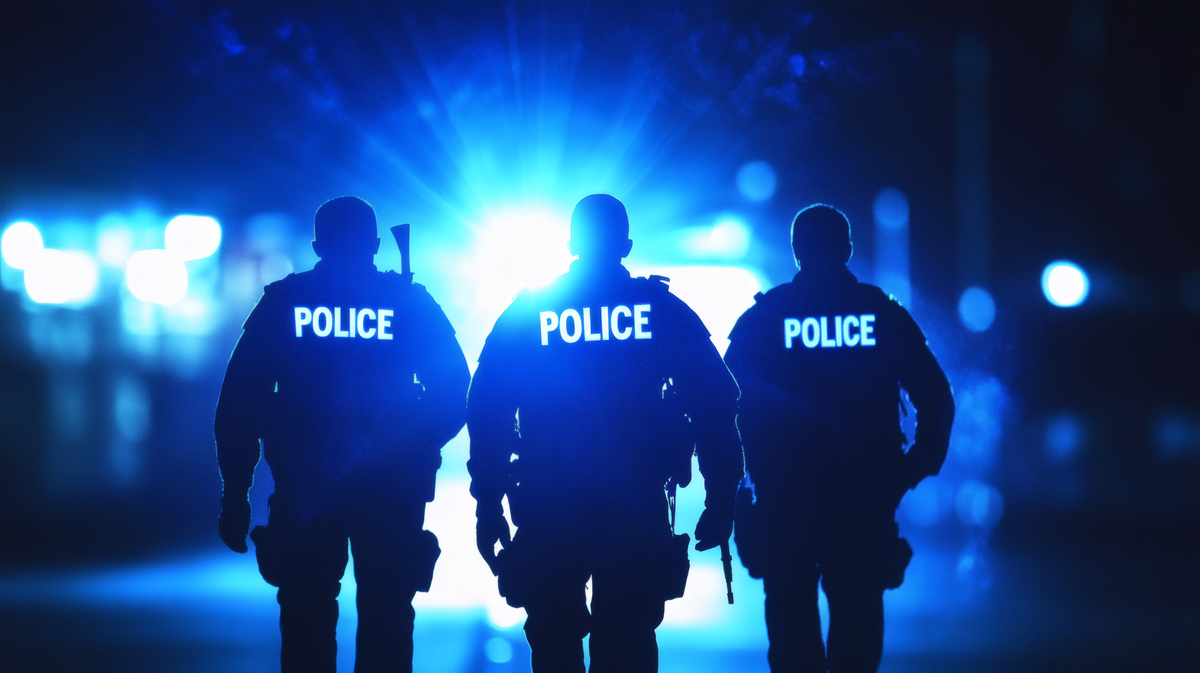Back to the Basics: Why We Need “Old-Fashioned” Policing

By: Chief Scott Hughes
Policing is not static. The risks change, public expectations shift, and new philosophies emerge. But some fundamentals of the profession never change. At its core, policing requires courage, vigilance, and the ability to take command of situations quickly and decisively.
In recent years, however, the pendulum has swung in a troubling direction. Too many officers hesitate to use force when necessary, avoid using their command presence, and shy away from taking control of dangerous situations. That hesitation is costing lives, not only in terms of officer safety, but also in the safety of the communities we serve.
We can respect communities and enforce the law. We can be tough on crime and approachable. But to do both, we must get back to some “old-fashioned” principles of policing.
Recent Tragedies: A Reminder of the Stakes
Just this week in York County, Pennsylvania, three detectives: Sgt. Cody Becker, Detective Mark Baker, and Detective Isaiah Emenheiser were killed, and two others were critically wounded, when they attempted to serve warrants and were ambushed. (AP News)
Policing is inherently dangerous, and even assignments that appear routine can turn deadly without warning.
The investigation will ultimately determine the tactical decisions made that day. What cannot be debated is this: policing is inherently dangerous, and even assignments that appear routine can turn deadly without warning. This tragedy underscores why readiness and mindset are not optional; they are essential.
Warrior vs. Guardian: Finding the Balance
Much has been written about the “warrior” and “guardian” models of policing. Both contain value. However, in recent years, policing philosophies have shifted significantly toward guardianship and away from warrior readiness.
A recent study published by the Office of Justice Programs found that recruits identifying with a warrior mindset were more likely to view the justified use of force as acceptable when circumstances required it. In contrast, those aligned with the guardian mindset leaned toward minimizing force, even in cases where decisive action was warranted. (OJP, 2025)
The takeaway is not that one mindset should replace the other. It’s that policing requires both. Officers must be guardians in how they treat people; fair, approachable, and empathetic. But when violence confronts them, they must be warriors: decisive, courageous, and unwilling to surrender the initiative to those who would harm.
Policing requires both the guardian’s compassion and the warrior’s readiness.
Complacency: The Silent Threat
Complacency doesn’t announce itself. It sneaks in through routine, assumption, or the belief that “this call will be just like the last one.” Yet time and again, tragedies grow from calls that seemed ordinary at the start: traffic stops, domestic disputes, or even warrant service.
The numbers reinforce this reality. According to the Fraternal Order of Police, as of July 2025, at least 56 officers have already been shot in ambush-style attacks, accounting for more than 28% of all officers shot in the line of duty so far this year. (FOP via Police1)
And tragically, those numbers will now rise to include the detectives ambushed and killed this week in Pennsylvania. This serves as yet another reminder that ambushes are not statistics; they are sudden, devastating realities for officers and their families.
Where We’re Getting It Wrong
-
Overemphasis on optics over outcomes
Officers are second-guessed based on perception instead of facts, creating hesitation in critical moments. -
Ambiguity in policy
Confusing or restrictive policies leave officers uncertain of when they are expected to act decisively, slowing reaction time in life-threatening encounters. -
Reduced tactical training
High-intensity, scenario-based training has been scaled back in many agencies due to cost, politics, or optics. This leaves officers underprepared for the realities of violence. -
Culture of hesitation
Constant fear of disciplinary or legal backlash discourages officers from using force or asserting command presence, even when clearly necessary. -
Failure to account for danger in “routine” calls
Too often, dangerous encounters stem from the very situations that appear mundane. Officers must be conditioned to anticipate the unexpected.
A Balanced Path Forward
Recommitting to “old-fashioned” policing doesn’t mean turning back the clock. It means combining timeless principles with modern tools:
-
Scenario-driven training that blends de-escalation and decisive action.
-
Review and refine policies to ensure they are clear, practical, and realistic, giving officers the confidence to act decisively without being paralyzed by uncertainty.
-
Acknowledge the limits of policy; no manual can anticipate every scenario an officer will face in the field. Training and leadership must prepare officers to make sound, reasonable decisions in rapidly evolving situations.
-
Leadership support that backs officers who make lawful, reasonable decisions under pressure.
- Mental resilience training that prepares officers to handle not just physical risks, but also the psychological toll of the job.
No manual can anticipate every scenario. Officers need training and leadership that prepare them for the unexpected
My Unwavering Support
To every officer: I stand with you. I believe in the work you do and the risks you take. Support does not mean excusing misconduct; it means building systems, policies, and cultures that let you do your job with confidence, courage, and professionalism.
Communities deserve officers who are tough when toughness is required, compassionate when compassion is called for, and always ready to face the unexpected. That’s “old-fashioned” policing. And it’s time we return to it.

